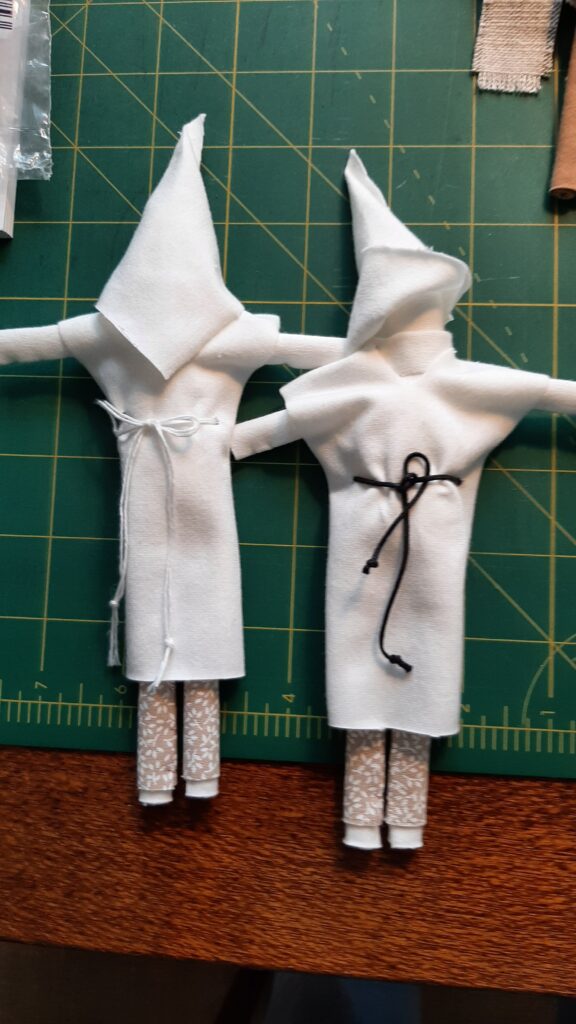Textile design, design, patchwork, quilting
About me
In textile design I have opened up a new area of artistic design. I would like to present the results of this work to you in the “Textile Circle of Life”.
I have always loved and admired textiles. Colors, fabric structures and haptics attracted me as a child. The complex works always captivate me as touching results of the mutual influence of design and manufacturing techniques of a particular society. An artist’s active engagement with available materials and artistic traditions creates tangible worlds of feeling for me, shaping time and language in ways I have never been able to escape.

When profound changes in living conditions moved me to a new professional start several years ago, I chose the field of textile design without hesitation. I am a landscape architect by training.
Early on I started consciously collecting threads, fabric scraps, plant fibers, seaweed and the like. Today I systematically assemble a wide variety of materials without being guided by my current designs.
In the elaboration of the designs, I then rely on the free choice of materials and their combinations. I also enjoy my artistic freedom in the process of the formal design of the compositions and motifs.

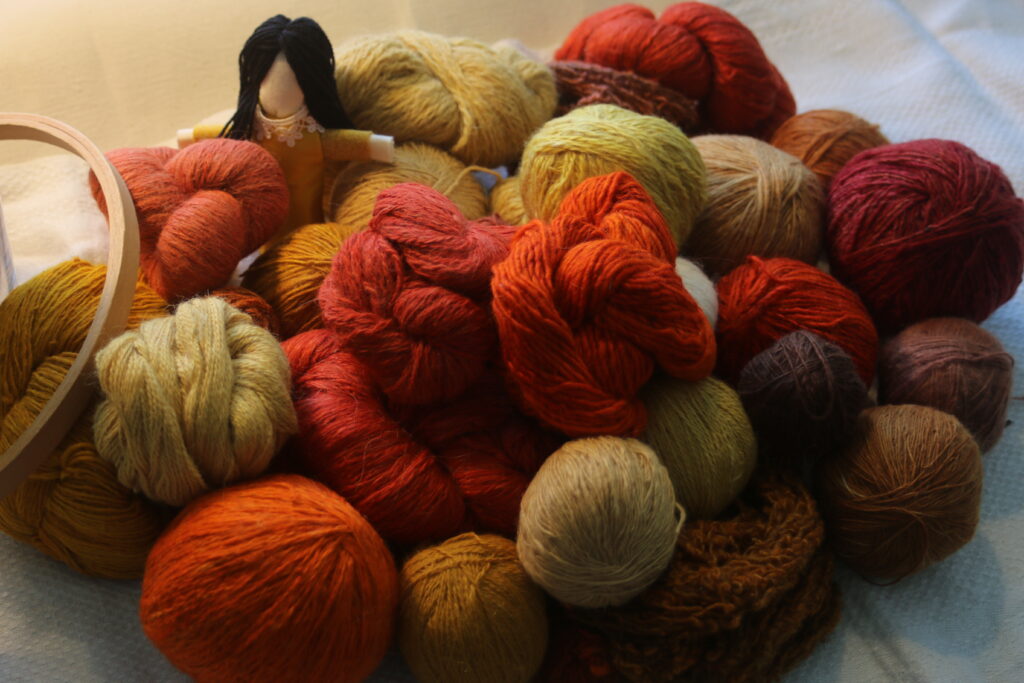
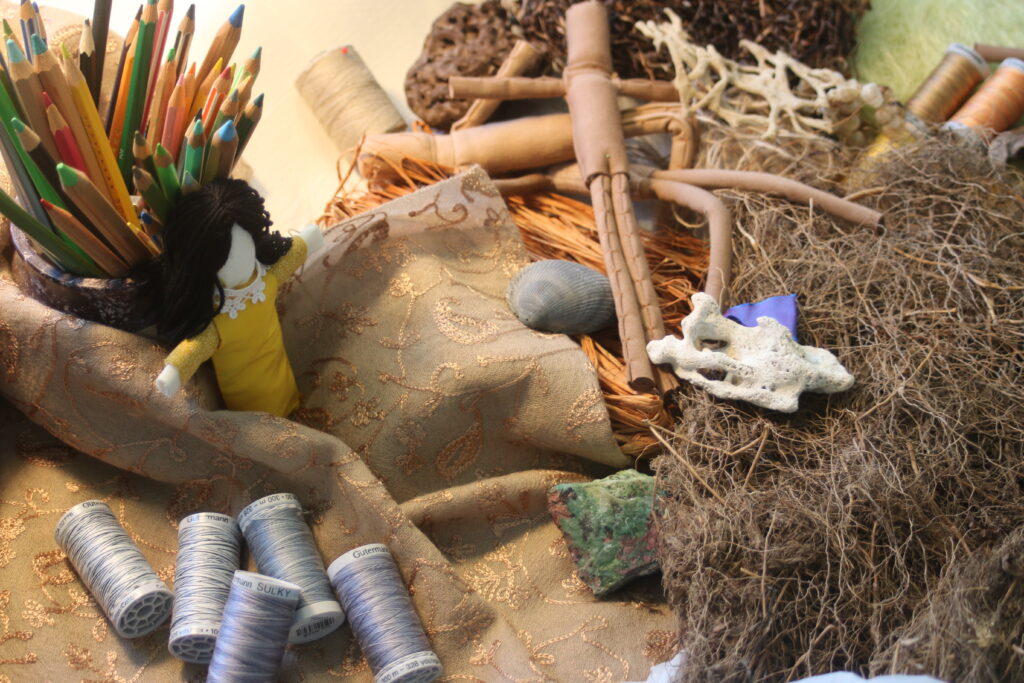

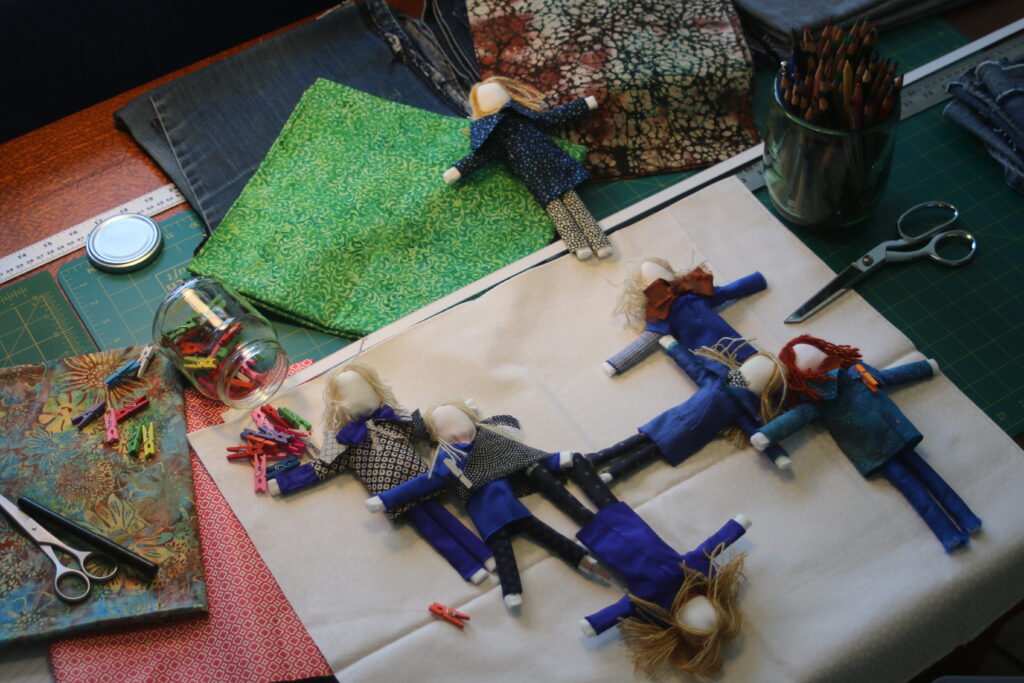
The technical difficulties I sometimes encounter during execution then require my special attention. I regularly explore the many techniques of textile art and the possibilities of bringing different ones together coherently in a special project. It is a learning process that challenges me, that holds surprises and at the same time is a joy. Based on the experience gained and all the influences I allow, I then create the next of my designs.
In doing so, I remember words by Salvador Dali:
” Don’t be afraid of perfection, you will never reach it. “


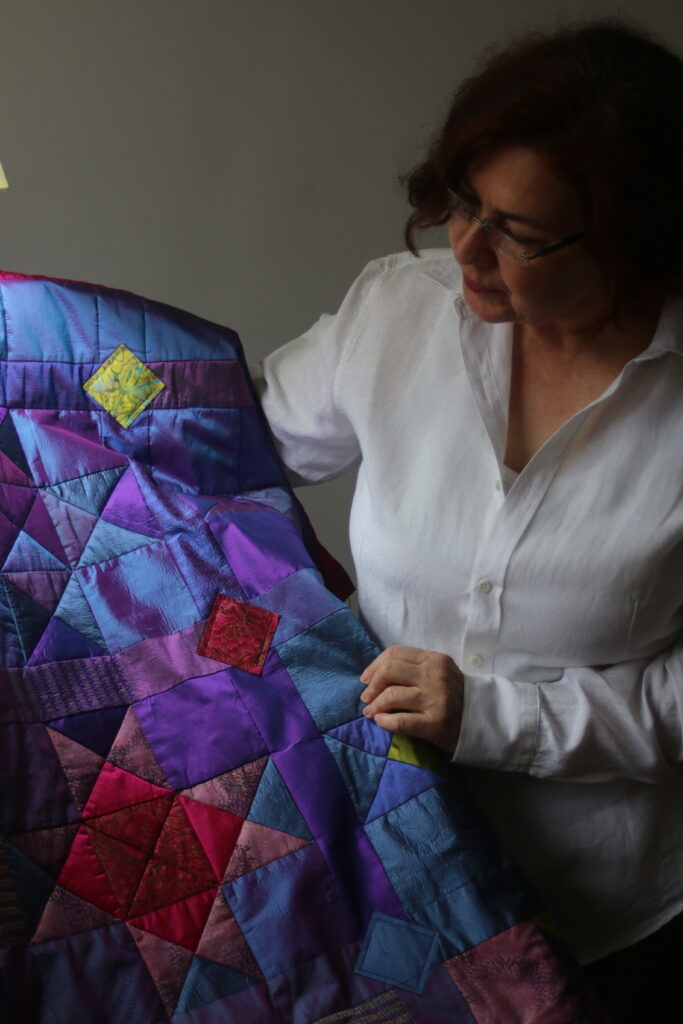




I am fascinated by the traces of wear on clothes. Especially attractive are very strained jeans. I did not know how tedious it is to take them apart.
Hand embroidery has given me a lot of pleasure. It’s therapeutic – when you forget about time. I spent hours listening to documentaries more than watching them.
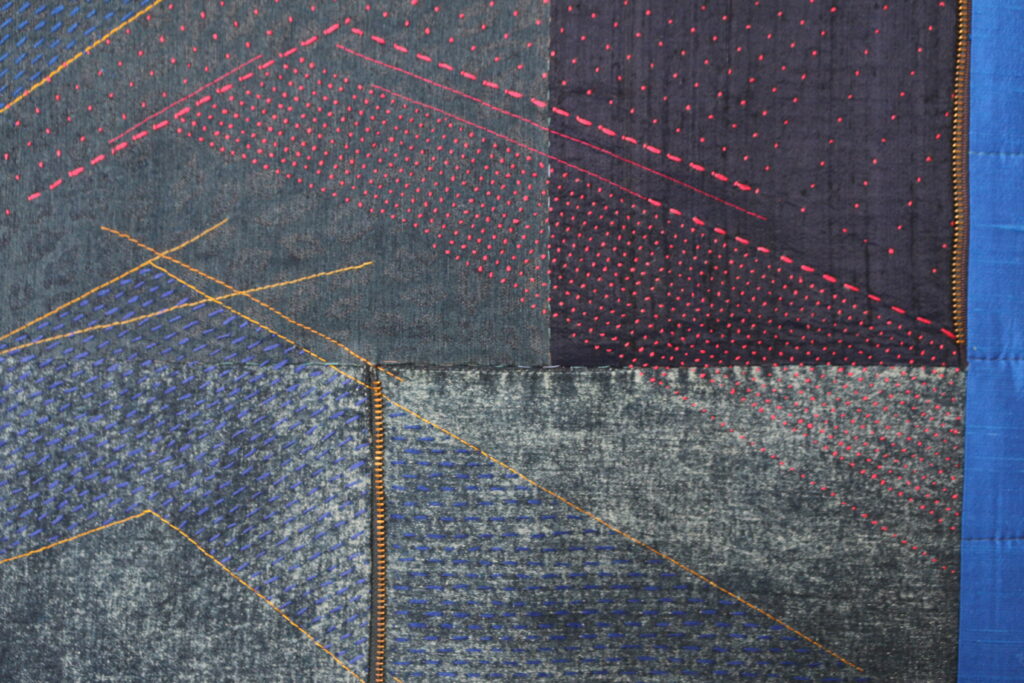

Pre-Columbian textiles are masterpieces.
I was very pleased when I learned that the German Textile Museum Krefeld presents its collection in the exhibition ” Peru – a Cat’s Leap “. I enjoyed visiting the exhibition; I will schedule the next one on a weekday to enjoy the library as well.
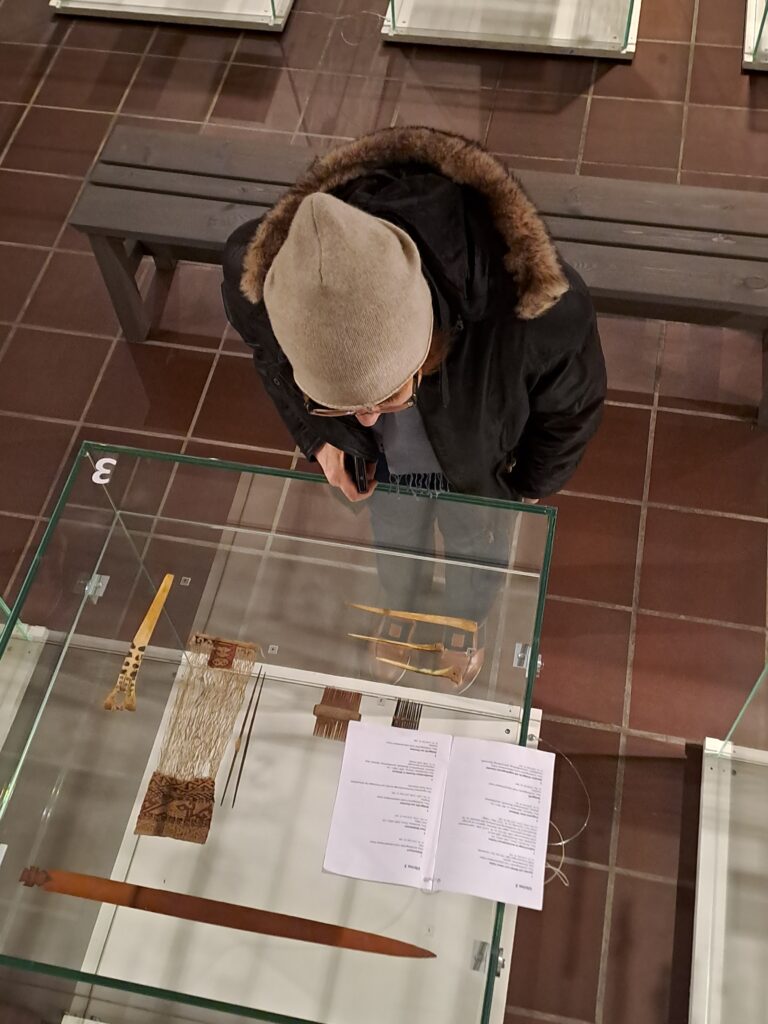




EQA Challenge 2023 ” Flower Power “
This year I participated in the EQA Challenge for the first time. The motto is “Flower Power
I have called my design ” WE “.


The conditions of participation were very clear: it should be a round quilt, from 25 to 40 cm in diameter.
I have never worked a round format before.


Patchwork Professional has given me the opportunity to report on my work as a textile designer in its 04/2023 issue. Thank you very much!
Every beginning is a challenge.
Whenever looking at the mostly gray sky doesn’t help me find the solution to a mostly technical problem, I try a deliberately relaxed look at various art books and journals. In such moments, Patchwork Professional not only offers a variety of suggestions, but also gives pleasure when reading. From the spontaneous thanks to the editor has arisen the opportunity to tell you today about the beginnings of my work in the field of textile design.
When profound changes in my living conditions moved me to a new professional start several years ago, I chose, actually without hesitation, textile design.
I love textiles; their colors, fabric textures and feel attracted me since my childhood. Thus, I began decades ago with the attentive collection of threads, yarns, plant fibers and fabric scraps. Time and again, I’ve also bought particularly fine fabrics or picked up garments with interesting wear marks. I never worked with these treasures – they served for admiration and still give comfort today.
The very fact of having a destination in mind again was a relief. Planning the learning process of the different techniques and procedures was a pleasure as well as setting up my workspace and putting together the necessary equipment, tools and work materials.
For the time being, I did not set myself any limits when it came to choosing the different techniques; I started with those that I was able to acquire through self-study as an autodidact. Making a patchwork was the first step in my personal curriculum. One sunny morning, I gathered all my courage and cut up a piece of bright blue silk, confident that I could assemble it into an asymmetrical star in an acceptable shape.
Fortunately, it worked; I worked three more in the following days, and they remain with me today on the pinboard in my study. After that I studied quilting (by hand and by machine), felting, weaving and embroidery to get an overview of the possibilities and difficulties of these ways of working.
One goal was also the coherent combination of these in my designs. I had no idea of the difficulties that arise when, for example, in a patchwork individual areas are knotted out with fine wool. If you still don’t want to give up, you’ll lose a lot of feathers.
In the elaboration of the designs I still rely on the free choice of materials and their combinations as well as on the combination of textile techniques. However, through experience I have become a little more cautious. After various projects I can better imagine the complications that may be expected. In general, however, I enjoy the artistic freedom in the process of formal composition and motifs. The technical difficulties that I so often encounter, despite all the preparatory work, then require all my attention. It is a learning process that challenges me, that holds countless surprises and at the same time gives me joy.
One idea, however, not only challenged me, but presented me with a series of unexpected questions. It is the idea of the perfection of a work. This word alone: perfection. It is aloof, cool and not at all supple.
I actually love inclusions in crystals, rough surfaces, rust, unevenly spun threads, faded sections of fabric, driftwood. Cracks, even holes in a fabric can be very interesting. But the work itself should be perfect.
Who actually says that ? I know that, of course; although my grandmother Frieda hardly ever used the word, her standards for her own work and work itself were always obvious. Her attitude was a benchmark for the whole family.
But with my love for imperfections, what do I mean by a perfect work?
In any case, it’s stress. Salvador Dali’s statement, “Don’t be afraid of perfection, you’ll never reach it.” doesn’t really help. I have learned that the answer to some questions does not come in words, and fortunately not all issues need to be clarified immediately. Learning processes presuppose a development that should not be restricted and the necessary freedoms within this process must be defended. Where would the surprise effect be otherwise?
After mainly geometric two-dimensional designs, one day I set out to create figurative elements, the “little people”, and breathe life into them. Why I wanted to develop it so badly at that point, I don’t know. Even the idea of them had not existed in my curriculum. But now I saw it in front of me and nothing stood in the way of its creation. Certain details were obvious: they should be of different sizes, present different skin colors, be curious and headstrong. I had quickly found the jersey for her skin, colorful fabrics for clothing had been resting in the treasure chest for years, along with fine spun wool for her hair. As a filling material for their bodies I use absorbent cotton. It was not difficult to work the individual parts of a body, then put them together and fix them with many small stitches, without losing the necessary flexibility. But only the third generation has learned to walk. I guess that’s called evolution. The effort, even if you only put together smaller groups, is considerable. But if you take the time, you can tell stories. “What are my little people doing?” I still hear the voice of our neighbor in Brisbane when she calls for her children, standing at the kitchen window. The origin of the, “little people” probably lies in the neighbor children Charly and Rose, who, with pollen on their foreheads and petals in their hair, enthusiastically tell us about the experiences of the day during a walk together in their subtropical garden in the late afternoon, until their mother asks them to dinner.
Every single technique that I have been able to work out so far is a door to very special design possibilities for me. I am aware that I will continue to train and develop these for years to come. However, I have already incorporated new elements into my curriculum, such as my version of sashiko embroidery.
In the meantime I was able to build up a small specialized library as well as to establish the first contacts to other artists and working groups. Then last year I made the decision to present my projects to interested people on my own website. I called it “Life Circle Textile” because that’s what textile design is for me today – a new circle of life, meaningful and peace-giving.
